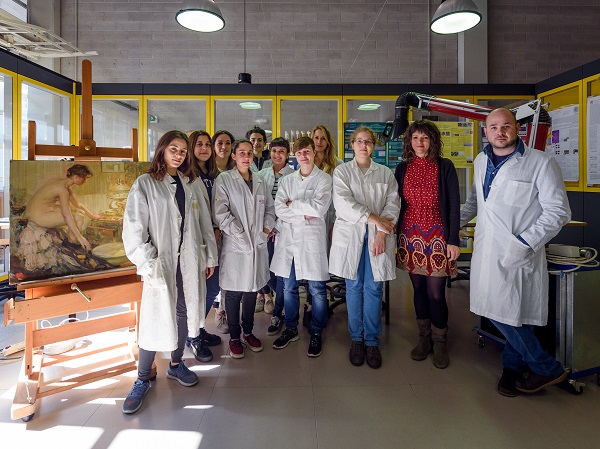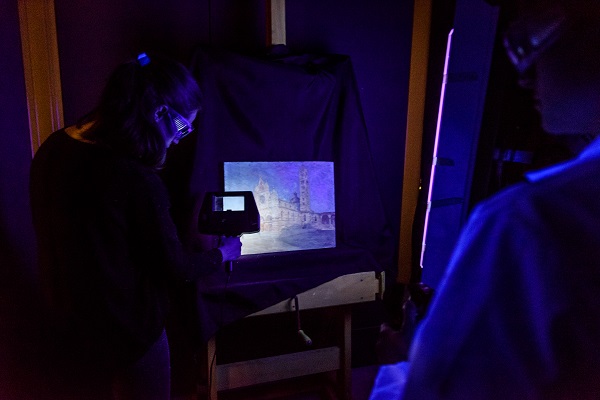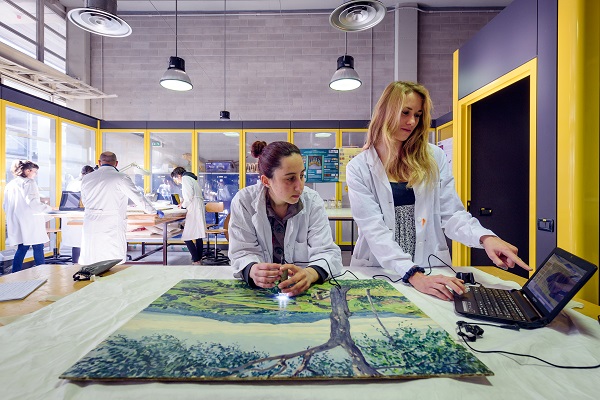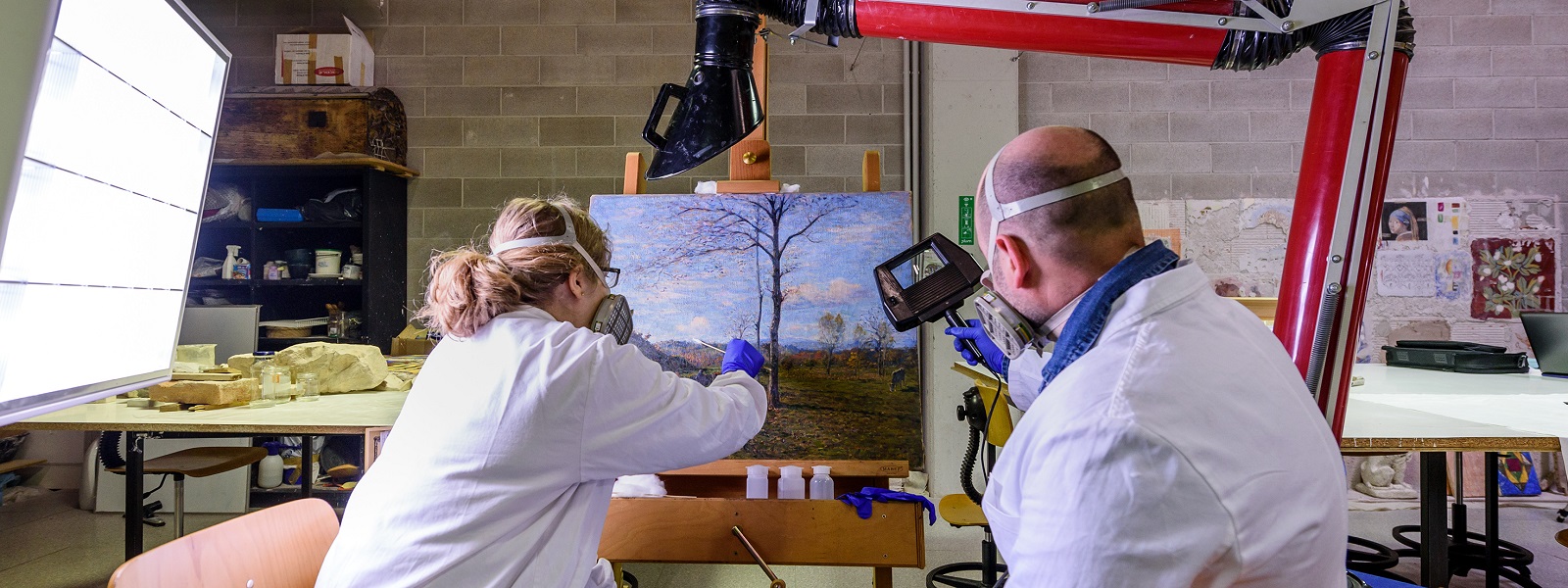Modern and contemporary art always poses new challenges for restorers. Bit by bit, the business is becoming more arduous to modify the varnish, the supports, the links, to name but a few elements in play when painting.
The innovation of diagnostic and restoration techniques, therefore, is crucial. For this, the Ca’ Pesaro International Gallery for Modern Art collaborate with a constantly up-to-date team: every year, in the Vega Laboratory, Master’s Degree students in Chemical Sciences for the Conservation and Restoration study and restore some of the 6 thousand works conserved by the gallery.
"Ottobre" (1904) by Clemente Pugliese Levi, "San Zenone degli Ezzelini" (1934) by Teodoro Wolf Ferrari, "Il Duomo di Siena" (1910) by Ferruccio Scattola and "La Toilette" (1909) by Richard Emile Miller are the works that have already been restored by Restoration Laboratory III at Ca’ Pesaro, carried out under the guidance of scholars Francesca C. Izzo and Teresa Perusini.

“In our laboratory, the first for the Master’s Degree programme, students begin to truly connect with artworks - explains Teresa Perusini, restorer and historian of artistic techniques – For the Bachelor’s degree programme, in theoretical exams and in laboratories, they learnt the history, the artistic techniques and the problems with conservation. Our laboratories give them a true work of art, often of great quality such as those belonging to the historical collection at Ca’ Pesaro, of which they must compile a technical report (modelled on national reports that have been established by the ISCR – Superior Institute for Restoration) and a conservation report.
Under the guide of the restoration scholar, students perform the necessary operations for the conservation and maintenance of the works. Furthermore, they develop an artistic historical research on the work and its author with particular attention on its technical and conservative aspects, perfecting their knowledge of research in historical archives and the specialised libraries on the techniques of painting.
“First of all, the paintings have been examined through different and complementary investigation techniques – explains Francesca C. Izzo, conservation scientist in the Department of Environmental Sciences, Informatics and Statistics – they pass from non-invasive techniques, such as infrared reflectography and various methods of imaging, for example, to a withdrawal of micro-samples that are analysed through techniques of elementary, spectroscopic and chromatographic variations. The aim of this technical-scientific approach is to understand the works from a “material” point of view, or even to identify the materials used by the artist (the palette, the pictorial binders, the use of varnishes); to understand the execution techniques for the work (presence of the preparatory design, succession of the pictorial layers and the preparation); verify the state of conservation and the possible presence of products due to degradation of original materials or to previous restorations. This information contributes to the understanding of the work and is, therefore, the base to write a correct conservation project, able to respect the work and its history. We adopt a multi and interdisciplinary approach that distinguishes both this didactic laboratory and the actual degree programme”.

In previous years, students of laboratory III have worked on a number of other works at Ca’ Pesaro, painters of famous artists between late 1800 and early 1900: Ippolito Caffi, Emma Ciardi, Alessandro Milesi, Cesare Laurenti, Federico Zandomeneghi, and Filippo Palizzi only to name a few.
“Between late 1800 and early 1900 artists introduced new materials in painting. This presents unforeseen problems in restoration, problems that are more relevant when compared to older works - explains Matteo Piccolo, one of the conservators at Ca’ Pesaro gallery. - The collaboration with Ca’ Foscari and its laboratory students is very important because it allows us to know more about the techniques used, to program our restoration work better and to be connected to a network of centres and specialists of the highest level. Furthermore, the experimentations carried out during the students’ thesis work constantly presents us with new understanding on the state of of the works and of the reaction of materials used with respect to different environments. Thanks to one study carried out at Ca’ Foscari in 2011, furthermore, today we are able to launch the awe-inspiring restoration of Sartorio’s picture cycle, a work on a surface of 200 square metres presented at the Biennale in 1907 and painted with a particular technique, on which scientists have made a full investigation”.

At the end of the laboratory, the research, analysis and work carried out on the art merges into a written text that the students prepare to understand the reports that must be able to autonomously carry out in their professional life.
The didactic and research activity carried out at Ca’ Pesaro is made possible by an agreement with the university and the Musei Civici Foundation of Venice. It will continue with Master’s Degree students in the new version entirely in English: Conservation Science and Technology for Cultural Heritage.











